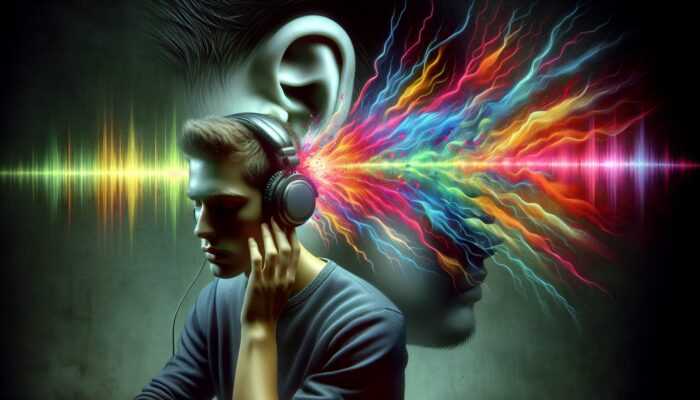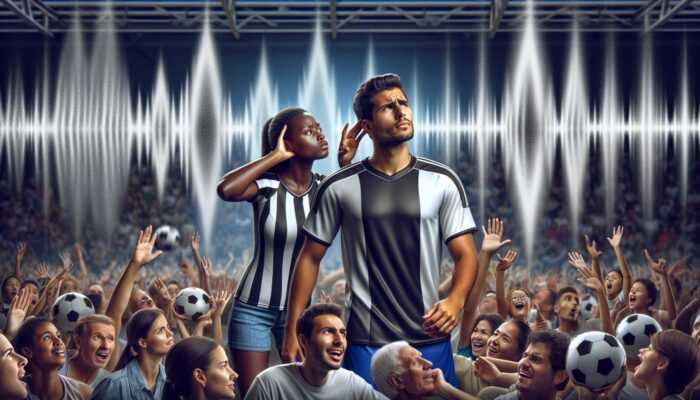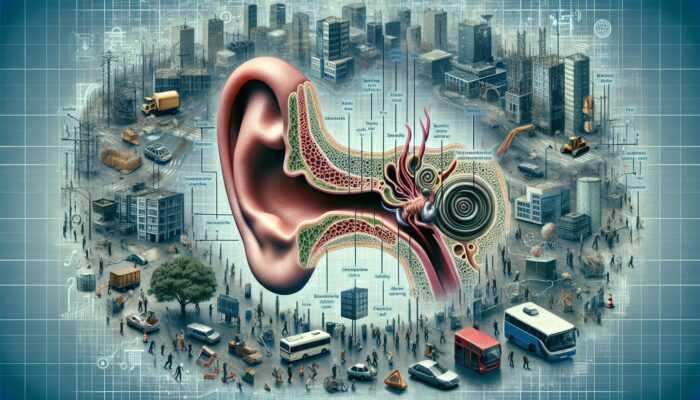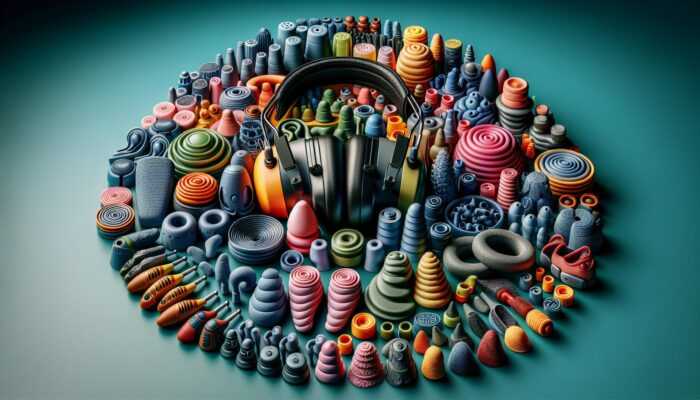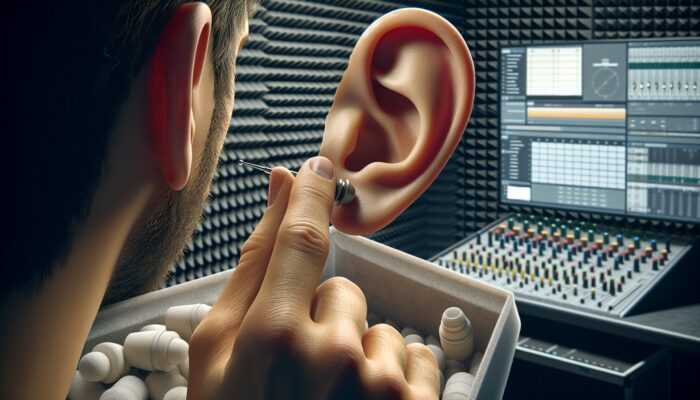Last Updated on 11/08/2025 by Admin
Understanding Noise Levels and Their Associated Risks for Hearing Health
What Noise Levels Are Safe for Protecting Your Hearing Health?

Comprehending safe noise levels is vital for anyone involved in tasks that require the use of tools, as consistent exposure to elevated decibel levels can lead to irreversible hearing damage. Generally, being exposed to 85 dB for a maximum of 8 hours is considered safe. Surpassing this limit significantly heightens the risk of hearing impairment, particularly with prolonged exposure. Below, you will find a detailed list of common noise levels for various tools frequently utilised across multiple industries, which can help raise awareness of potential hazards for workers:
- Chainsaw: 110 dB
- Jackhammer: 130 dB
- Power drill: 95 dB
- Table saw: 100 dB
- Leaf blower: 100 dB
- Compressor: 100 dB
- Impact wrench: 105 dB
- Hammer drill: 98 dB
By familiarising yourself with these levels, individuals can implement protective measures to preserve their hearing health. Regular monitoring of the noise levels produced by the tools in use and comparing these against the established safe levels is crucial for making informed decisions regarding necessary hearing protection.
How Do Tools Generate Noise While In Use?
Tools produce noise primarily through mechanical operations, which include engines, impacts, and vibrations. The mechanisms behind this sound generation can vary considerably; for instance, power tools often generate noise through high-speed rotational movements or reciprocating actions. By understanding the sources of noise, users can make informed choices when selecting tools, opting for quieter alternatives whenever possible to minimise the risk of hearing damage.
Selecting tools that are designed for reduced noise output is not merely a matter of preference; it is a fundamental safety measure. Many manufacturers have developed models that are equipped with sound-dampening features, which significantly lower operating noise levels. Transitioning to these quieter options can effectively mitigate the risks associated with prolonged exposure to harmful noise levels, thereby promoting a safer working environment.
How Can You Assess Noise Levels in Your Work Environment?
Evaluating the noise levels in your work environment is not simply a precaution; it is a fundamental aspect of ensuring hearing safety. Utilising a decibel meter to measure ambient noise allows you to determine whether it exceeds safe levels. If noise levels consistently exceed 85 dB, it becomes crucial to adopt additional precautions to safeguard your hearing.
This evaluation should also consider factors such as the duration of exposure and proximity to loud tools. If your workplace consistently generates high noise levels, it may be necessary to implement engineering controls, such as sound barriers or quieter machinery. Regular assessments provide valuable insights into whether your current protective measures are sufficient or if adjustments are needed to ensure your hearing remains protected.
Professional Recommendations for Preventing Hearing Damage from Tools

Real-World Evidence of Successful Hearing Protection Strategies
Real-world evidence showcases the effectiveness of various hearing protection strategies across different settings. For instance, a construction firm in Australia mandated hearing protection on-site, equipping workers with earmuffs while operating jackhammers. This resulted in a significant decline in reported cases of hearing impairment among employees. Such proactive measures highlight not only compliance with safety regulations but also a genuine commitment to employee well-being.
Another relevant example can be found in the woodworking industry in Canada, where a shift towards quieter machinery has been initiated. This transition has significantly reduced exposure levels for workers using table saws and planers. Coupled with the use of earplugs, these changes have led to marked improvements in the long-term hearing health of workers, underscoring the importance of combining equipment choices with personal protective measures.
Expert analysis indicates that when workers actively engage in their hearing protection strategies, they are far more likely to adhere to safe practices. This understanding emphasises the need for effective training and monitoring systems to ensure the ongoing success of hearing protection programmes across various industries.
What Actionable Steps Can You Take to Minimise Noise Exposure?
Reducing noise exposure in the workplace necessitates a multifaceted approach and can be achieved through numerous actionable steps. Scheduling regular breaks can significantly decrease cumulative exposure to high noise levels, providing essential recovery time and diminishing the risk of hearing damage. Additionally, selecting tools specifically designed for quieter operation can greatly lessen harmful sound levels.
Here are several practical recommendations that can be immediately implemented:
- Rotate tasks among workers to limit individual exposure time.
- Upgrade to quieter models of tools and machinery.
- Incorporate sound barriers or acoustic panels in the work area.
- Schedule noisy tasks during times when fewer workers are present.
- Educate workers about the importance of hearing protection.
- Utilise noise-cancelling headphones where appropriate.
- Regularly assess and maintain tools to ensure they operate efficiently and quietly.
- Install noise monitoring systems to track exposure levels in real-time.
Implementing these strategies not only minimises the risk of hearing damage but also fosters a safer, more productive work environment. Workers who feel that their health is prioritised are more likely to perform better and remain committed to safety protocols.
What Are the Long-Term Benefits of Consistent Use of Hearing Protection?

Investing in hearing protection today offers substantial long-term benefits for both individuals and organisations. Preserving hearing health is not merely a matter of comfort; it directly impacts overall well-being and quality of life. By actively safeguarding their hearing, workers can significantly reduce their risk of developing conditions such as tinnitus, which can severely disrupt daily life.
Long-term use of effective hearing protection leads to improved focus, productivity, and communication in noisy environments. As workers experience less auditory fatigue, they can engage more effectively in their tasks, enhancing their overall efficiency. Moreover, by protecting their hearing, individuals contribute to a culture of safety that can resonate throughout an organisation, promoting a stronger commitment to health and safety standards.
The financial implications of long-term hearing protection are also significant. By reducing the frequency of hearing-related claims and maintaining a healthier workforce, companies can save on compensation costs while improving employee retention. Ultimately, prioritising hearing health serves as an investment in a better future for both workers and employers.
How to Choose the Right Hearing Protection for Different Tools?
Selecting the appropriate hearing protection necessitates a thorough understanding of the noise levels generated by various tools and the corresponding protective gear available. It is crucial to align the noise reduction capabilities of hearing protection devices with the specific decibel levels of tools being used.
Several options are available, including earplugs, earmuffs, and custom-fitted devices. Each option presents unique advantages depending on the work environment and individual preferences. For example, earplugs are often preferred for their portability and comfort, particularly in construction or woodworking settings. Earmuffs, on the other hand, can deliver superior noise reduction and comfort for extended durations, making them ideal for noisier environments such as factories or construction sites. Custom-fitted devices offer tailored protection and comfort but may require a higher initial investment.
Consulting a safety professional to assess your specific needs can facilitate the selection process. Recognising the requirements of your work environment and the tools used ensures that the chosen hearing protection effectively aligns with safety standards and personal comfort.
The Critical Role of Regular Hearing Tests in Preventing Damage
Regular hearing tests represent a proactive approach to monitoring hearing health and preventing long-term damage. These assessments help identify early signs of hearing impairment, empowering individuals to make informed decisions regarding their hearing protection strategies. Incorporating routine check-ups as part of a workplace safety programme ensures that any potential issues are promptly addressed.
Additionally, regular testing can inform adjustments in hearing protection methods, allowing workers to modify their strategies based on changes in their hearing abilities. For instance, if a worker begins to show early signs of hearing loss, it may be necessary to reevaluate their current protective measures and potentially upgrade to more effective solutions.
Cultivating a culture that prioritises routine hearing checks promotes a safer work environment. Employees are more inclined to engage in protective behaviours when they recognise the significance of regular assessments and the potential repercussions of neglecting their hearing health. Making audiometric testing a standard practice underscores an organisation’s commitment to employee welfare and encourages a proactive approach to hearing protection.
Selecting the Most Effective Hearing Protection
Exploring Various Types of Hearing Protection Devices
Hearing protection devices are available in several forms, including earplugs, earmuffs, and custom-moulded options, each providing different levels of protection and comfort suitable for various work environments. Earplugs are compact, lightweight, and easily portable, making them an excellent choice for on-the-go protection. They are typically made from foam or silicone and can effectively reduce noise levels by 20 to 30 decibels.
Earmuffs, in contrast, encompass the entire outer ear. They generally offer a higher level of noise reduction than earplugs, making them ideal for environments with sustained high noise levels, such as manufacturing plants. For maximum protection, consider custom-moulded devices, which provide a personalised fit. These options can deliver superior comfort and effectiveness, particularly for workers exposed to high-noise environments for extended periods.
Understanding the specific noise levels and characteristics of your work environment can aid in selecting the most suitable type of hearing protection, ensuring both safety and comfort throughout the workday. Each device has its place, and a combination of options may sometimes be necessary to provide comprehensive hearing protection.
How Can You Determine the Best Option for Your Needs?
Determining the best hearing protection requires evaluating several factors, including the noise levels of tools, comfort, and the duration of exposure. High noise levels necessitate more robust protection, while environments with lower noise might benefit from lighter devices. Comfort is crucial; if hearing protection is uncomfortable, the likelihood of consistent use diminishes.
Consider the compatibility of other safety gear when selecting hearing protection. In settings where helmets or safety goggles are also required, earmuffs may not fit well, making earplugs a more viable option. The noise reduction rating (NRR) is another critical aspect; this rating indicates how much sound the device can effectively block. A higher NRR offers better protection in high-noise environments.
Ultimately, the best option is one that balances noise reduction with comfort and practicality for the specific tasks being performed. Engaging with safety professionals or conducting trials with various devices can help workers identify the best fit for their unique requirements.
What Essential Features Should You Look For in Hearing Protection?
When selecting hearing protection devices, key features should not be overlooked. The noise reduction rating (NRR) is vital; it indicates how effectively a device can block sound. Devices with an NRR of 30 or higher are ideal for extremely loud environments. Comfort is another essential feature, as prolonged use can lead to discomfort that discourages consistent wear.
Durability is also a crucial consideration, particularly in demanding work settings. Devices should be constructed from robust materials that can endure wear and tear. Additionally, ease of maintenance is significant; hearing protection devices that can be cleaned easily ensure a longer lifespan and maintain hygiene.
Incorporating these features into your selection process will help guarantee that the chosen hearing protection is both effective in reducing harmful noise levels and comfortable enough for daily use. Striking a balance among these factors will ultimately enhance the effectiveness of your hearing protection efforts.
How to Ensure Proper Fit and Usage of Hearing Protection?
Proper fitting and usage of hearing protection are essential for maximising effectiveness. For earplugs, ensure they are inserted deeply enough into the ear canal to form an adequate seal. Adhere to manufacturer guidelines to achieve the correct fit; improper placement can drastically reduce sound-blocking capabilities. Earmuffs should encompass the entire ear and establish a tight seal around the edges to prevent sound leakage.
Educating workers on the importance of achieving a proper fit is vital. Training sessions can provide practical demonstrations and reinforce the significance of wearing protection correctly. Comfort plays a critical role in ensuring compliance; workers are more likely to consistently wear protection if it fits well and feels comfortable throughout the workday.
Regular checks of hearing protection devices can ensure they maintain their effectiveness. Users should understand how to inspect their devices for signs of wear and tear, guaranteeing that they provide optimal protection when in use. Ultimately, a culture of safety that emphasises proper fitting and usage will significantly reduce the risk of hearing damage.
When Should You Consider Replacing Your Hearing Protection Devices?
Hearing protection devices should be replaced regularly to preserve their effectiveness. Signs of wear, such as cracks, tears, or loss of elasticity, indicate that a device is no longer providing the necessary protection. Routine inspections should be incorporated into regular practices, allowing users to evaluate the condition of their devices consistently.
Moreover, when the noise reduction rating decreases due to wear and tear or when devices no longer fit properly, it is time to contemplate replacements. This is particularly critical in environments with consistently high noise levels. Regularly monitoring the condition of hearing protection not only ensures safety but also promotes a proactive mindset among workers.
Establishing a systematic schedule for replacements can help maintain the integrity of your hearing protection strategy. By being vigilant about the condition of hearing devices, workers can ensure their hearing safety remains uncompromised.
Proper Maintenance of Your Hearing Protection Devices
Essential Tips for Cleaning and Storing Hearing Protection
Proper cleaning and storage of hearing protection devices are crucial for extending their lifespan and ensuring ongoing effectiveness. For earplugs, a basic cleaning regimen with mild soap and water is often sufficient. After cleaning, allow them to dry completely before storing to prevent the growth of mould or bacteria.
Earmuffs should also be regularly wiped down with a damp cloth to eliminate dirt and sweat buildup. It’s vital to ensure that the padding remains in good condition, as worn-out padding can compromise fit and seal. Store all devices in a cool, dry location to avoid damage from heat or moisture. Utilising a protective case can further safeguard their condition, keeping them safe from physical damage.
Educating workers about cleaning routines and proper storage practices fosters a culture of care and responsibility, ensuring that hearing protection devices remain in optimal condition for use. Regular maintenance not only prolongs the life of the devices but also reinforces the significance of hearing safety in the workplace.
When Is It Necessary to Replace Your Hearing Protection Devices?
Recognising when to replace hearing protection devices is critical for maintaining effective safety measures. Replace earplugs when they show signs of wear, such as cracks or loss of shape. Earmuffs should be replaced if the padding is worn down or if the device no longer fits securely.
In high-noise environments, it is particularly crucial to monitor the performance of hearing protection. Regular inspections can help identify issues before they compromise hearing safety. Additionally, if a worker experiences a change in comfort or effectiveness, it’s wise to consider replacement.
Establishing a routine for checking and replacing devices promotes a proactive approach to hearing protection. By ensuring that all equipment is in optimal condition, workers can maintain a safe environment and effectively protect their hearing.
What Are the Common Signs of Wear and Tear in Hearing Protection Devices?
Identifying signs of wear and tear in hearing protection devices is essential for maintaining their effectiveness. Common indicators include visible cracks, fraying edges, or a loss of shape in earplugs. In earmuffs, signs may include worn-out padding, broken hinges, or compromised seals.
Conducting regular inspections is crucial for early identification of these symptoms. Any noticeable decline in comfort or fit can also signal that it’s time for a replacement. Neglecting to replace worn devices can lead to decreased protection and an increased risk of hearing damage, particularly in noisy work environments.
Fostering a habit of examining hearing protection regularly reinforces a culture of safety. By being vigilant about the condition of devices, workers can ensure they are adequately protected and minimise the risks associated with prolonged noise exposure.
Comprehensive Strategies for Preventing Hearing Damage from Tools
Expert Insights on Effective Noise Reduction Techniques
Expert insights indicate that effective noise reduction techniques can involve a combination of engineering controls, administrative controls, and personal protective equipment (PPE). Engineering controls focus on modifying tools or the work environment to minimise noise exposure. For instance, using quieter machinery or implementing sound barriers can significantly lower overall noise levels in a workspace. Such changes can lead to a safer and more comfortable environment for workers.
Administrative controls provide an additional layer of protection, concentrating on how tasks are organised and executed. Limiting exposure time, rotating workers through quieter tasks, and scheduling loud operations during periods when fewer individuals are present are all effective strategies to reduce noise exposure without altering the tools themselves. This strategic management of noise can enhance overall workplace safety.
Lastly, personal protective equipment, such as earmuffs or earplugs, remains indispensable. Employing a combination of these three strategies provides comprehensive protection against hearing damage. Regularly assessing and adjusting these methods based on specific workplace conditions ensures that workers remain adequately protected from hazardous noise exposure.
How to Effectively Implement Engineering Controls?
Implementing engineering controls is a powerful approach to reducing noise levels in the workplace. This method emphasises modifying equipment or work environments to minimise sound production, thereby protecting workers from excessive noise exposure. Upgrading to quieter machinery, for instance, represents a proactive strategy that can yield significant results in reducing ambient noise levels.
In addition to machinery upgrades, sound barriers or acoustic panels can be strategically positioned to absorb and deflect sound waves, effectively lowering noise levels in critical areas. Creating designated quiet zones within a workspace can also help limit exposure to high noise levels, particularly for workers who need to concentrate on intricate tasks requiring better focus.
Regular noise level assessments can inform decisions regarding necessary engineering modifications, ensuring the workplace remains within acceptable limits. By implementing these changes, employers demonstrate a commitment to worker safety and well-being while fostering a more pleasant work environment.
What Role Do Administrative Controls Play in Managing Noise Exposure?
Administrative controls are vital in enhancing workplace safety by addressing how tasks are organised and executed to minimise noise exposure. These controls help establish policies that limit the duration of exposure to high noise levels. For example, implementing rotation schedules where workers alternate between high-noise and lower-noise tasks can significantly reduce overall exposure time.
Furthermore, scheduling particularly loud tasks during off-peak hours when fewer workers are present can limit the number of individuals exposed to hazardous noise. Administrative controls also encompass training programmes that educate workers about noise exposure risks and the importance of utilising hearing protection.
Promoting compliance through incentive programmes can encourage workers to adhere to safety protocols. By fostering a workplace culture that prioritises hearing safety, organisations can effectively mitigate the risks associated with prolonged noise exposure, ultimately safeguarding the hearing health of their workforce.
Raising Awareness and Educating Others on the Importance of Hearing Safety
The Significance of Training Programmes in Hearing Protection
Training programmes are instrumental in educating workers about the risks associated with noise exposure and the proper usage of hearing protection. Comprehensive training ensures that employees understand the importance of safeguarding their hearing and equips them with the necessary knowledge to make informed safety decisions. Regular training sessions reinforce safety protocols and maintain hearing safety at the forefront of workplace priorities.
Through these programmes, workers learn about safe noise levels and how to effectively assess their environments. They receive practical training on fitting and utilising hearing protection devices, ensuring compliance with safety standards. Engaging training methods, such as interactive workshops or demonstrations, can enhance understanding and retention of crucial information.
Moreover, fostering an open dialogue about hearing health and safety promotes a culture of awareness. When employees feel empowered to discuss concerns about noise exposure, they are more likely to take proactive measures to protect their hearing. By prioritising training, organisations demonstrate a commitment to employee welfare and create a safer work environment.
How Can You Cultivate a Culture of Safety in the Workplace?
Cultivating a culture of safety involves integrating hearing protection into the very fabric of the workplace. Encouraging the use of hearing protection and setting a positive example can significantly influence adherence to safety protocols. Leadership should actively promote the importance of hearing safety, demonstrating their commitment through visible actions, such as wearing hearing protection themselves.
Establishing clear safety policies and protocols regarding hearing protection is crucial. These should be effectively communicated to all employees, highlighting that safety is a top priority. Recognising and rewarding compliance can further motivate individuals to take hearing protection seriously, reinforcing positive behaviours.
Additionally, fostering open communication regarding safety concerns encourages employees to voice any issues they may encounter. Regular safety meetings that include discussions about noise exposure and hearing protection practices can help maintain awareness and promote a culture where everyone feels responsible for their own safety and the safety of their colleagues.
Resources Available for Enhancing Your Knowledge on Hearing Safety
Numerous resources are available for those seeking to enhance their understanding of hearing safety. Online courses, safety manuals, and workshops can provide valuable insights into best practices for protecting hearing in the workplace. Many organisations offer specialised training focused on noise exposure risks and the effective use of hearing protection devices.
Engaging with industry-specific resources can also be beneficial. Websites dedicated to occupational health and safety often include guidelines, case studies, and materials tailored to specific sectors. Networking with professionals in the field can provide additional learning opportunities and insights into effective hearing protection strategies.
Staying informed about the latest advancements in hearing safety technology and regulations is crucial for maintaining a proactive approach to hearing protection. By leveraging these resources, individuals and organisations can enhance their safety practices and ensure a healthier work environment.
Frequently Asked Questions about Hearing Safety
What Noise Levels Are Considered Safe to Prevent Hearing Damage?
Safe noise levels are typically around 85 dB for a maximum of 8 hours. Prolonged exposure to levels above this can significantly increase the risk of hearing damage.
How Can I Accurately Measure Noise Levels in My Workplace?
You can measure noise levels using a decibel meter, which will assist in determining if the noise exceeds safe levels and if additional precautions are necessary.
What Type of Hearing Protection Is Recommended for Loud Tools?
For loud tools, earmuffs with a high noise reduction rating (NRR) are generally recommended, though earplugs can also be effective depending on comfort and fit.
How Often Should Hearing Protection Devices Be Replaced?
Hearing protection devices should be replaced whenever signs of wear become noticeable, such as cracks, loss of shape, or if they no longer fit securely.
Can Regular Hearing Tests Aid in Preventing Damage?
Yes, regular hearing tests can help monitor your hearing health and identify early signs of damage, allowing for timely adjustments in protection strategies.
What Are the Long-Term Benefits of Consistently Wearing Hearing Protection?
Long-term benefits include the preservation of hearing health, a reduced risk of tinnitus, and the maintenance of overall well-being and quality of life.
How Can I Educate My Coworkers About the Importance of Hearing Safety?
You can educate coworkers through training programmes, safety meetings, and by promoting a culture of safety that encourages the consistent use of hearing protection.
What Are Administrative Controls for Managing Noise Exposure?
Administrative controls consist of policies and practices that limit noise exposure duration, rotate workers through quieter tasks, and schedule noisy operations during off-peak hours.
Are Custom-Moulded Earplugs Worth the Investment?
Yes, custom-moulded earplugs provide a personalised fit, which can offer superior comfort and effectiveness, making them a valuable investment for those working in noisy environments.
What Are Some Effective Techniques for Noise Reduction?
Effective noise reduction techniques include engineering controls such as quieter machinery, administrative controls to manage exposure, and personal protective equipment like earmuffs and earplugs.
Explore our journey on X!
The post Avoid Hearing Damage from Tools: Essential Tips to Protect Your Ears appeared first on The Microsuction Ear Wax Removal Network.



